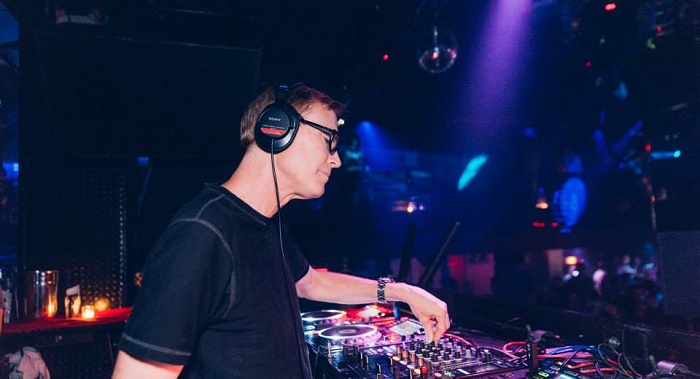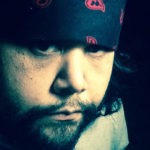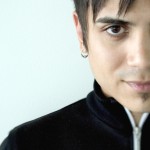Digital DJ Pool interviews Christopher Lawrence
Christopher Lawrence Interview
November 20th, 2015
Christopher Lawrence. It may not have the same ring to it like Tiësto or Daft Punk but it does carry the same weight. Many would argue that it carries more. The California producer and DJ has been a mainstay in Trance music for over 20 years and won Best American DJ at the IDMA’s at WMC in 2005 as well as being voted as America’s Best DJ in 2008 by DJ Times. Aside from his list of awards, he’s also been described with possibly every positive adjective in the English language by music journalists for his balance of progressive sounds and the original spirit of Trance. Two of his albums have charted on Billboard’s Top 10 lists and he continues that level of quality with his two labels, Pharmacy and Pharmacy Plus. The dedication to his art is apparent as he told us his views on the power of music and shared his story of falling in love with Trance.
Young Christopher was already a part of the Dance world before stepping behind the turntables or into a studio. He frequented clubs around the age of 16 in San Francisco and then one night his life changed when a DJ started to play Acid House.
“I think it was the exact same for everyone that heard acid house or techno for the first time. The scene began slowly as people like myself were first turned on to it by word of mouth but then it became an exponential explosion. Within a couple short years the scene went from small DIY parties of two or three hundred people to massive raves every weekend with twenty thousand people or more. Once you heard this music there was no turning back.”
To this day, he describes the sensation that came over him as something that is outside of any religion and makes him feel connected to other people who listen to the music. From there he started collecting his own records and purchased two Technics, a Numark mixer, and two small bookshelf speakers from RadioShack. He admits that the low budget speakers helped him master his sound as it forced him to mentally match the volume of club monitors: “Those speakers were unforgiving and my mixes had to be perfect.” He picked up some DJing basics from an employee, Timothy, at a local record store and then was on his own to learn the rest. Without the convenience of Youtube videos, he studied other DJs to learn mixing and also elevate the momentum on the dance floor.
In college he and his crew took it upon themselves to throw break in parties throughout San Francisco. They brought their own equipment and rented generators to abandoned warehouses, remote areas of Golden Gate Park, and the beach. They promoted themselves by word of mouth “and it was fantastic, totally organic, totally free.” The parties quickly grew from 50-60 people to a couple hundred and local promoters caught wind of the movement, inviting them to play at clubs. Once he moved to Los Angeles in 1994, his sets were edgier and the response from the crowds was positive to say the least. He eventually picked up production in the late 90’s when Chris Cowie from the Trance label Hook Recordings invited him to Scotland to work on music with him. Working with Cowie taught him that “it is what you do with what you have not how much you have. He was a great mentor.”
Since then, Christopher has seen a lot of success from his releases. Although considered underground genres of Dance music, he’s helped contribute to the growing interest in Psy and Tech Trance. You’ll often catch new parts of a song after the first listen since he layers each one so meticulously. Although the overall vibes are hypnotic and easy to get lost in, he makes sure to keep those paying close attention captivated with effects you may have never heard before in any genre of music. The typical four to the floor drums are left out at Christopher’s discretion in place of syncopated beats to expand the boundaries of Trance. The energy is unfiltered but never overwhelming–just like a good story. He describes the direction in his song creating process as well as his live sets as something that reflects life:
“Life is an emotional rollercoaster with its ups and downs. I like to begin my sets with non threatening, instantly engaging tracks, then go deeper and darker but there is always that release, the reward at the end which says we are all together in this and there is hope. As I said before, on the dance floor we can tap into deep emotions and there is a spirituality to music.
But as a seasoned veteran in the Trance world, he does have one major gripe with the application of the term “Trance.”
“[It] has become so corrupted that I am not sure that it can ever be saved. The music that I play is based on the original roots of Trance so it is quite frustrating. It is the same with Progressive House. The commercial EDM that is found in the Beatport Progressive House genre is so far removed from the original Progressive House sound championed by artists like Sasha & Digweed that it bears no relation at all. Listen to any of the old Global Underground mixes and then listen to what is called ‘Progressive House’ today. It’s just gross. I think the only solution is to create a new genre called ‘Big Room EDM.’ That would remove ninety percent of the offensive music and put it in its own category. Everyone from House to Techno and Progressive to Trance will be able to breathe a big sigh of relief.
Besides doing his best to preserve the sanctity of Trance with his own original music and podcasts, he turns to his two labels to fight for his cause. Viewing his labels as his extended family, he plans on throwing more events worldwide to support the platform he’s built. It also makes his life a little easier when subgenres like Psy Trance stay outside of the mainstream, keeping it pure and close to its original sound while also improving with technology in production. But even with all of the improvements in software and hardware, nothing in his opinion replaces the importance of a DJ’s programming skills. And after years of touring the world (America still being his favorite crowd with Argentina coming in a closed second), he still gets nervous before sets and sometimes in the studio: “There are always doubts and that is a good thing. It means there is room to grow and continue to be creative. That doubt pushes me. It is what gives me confidence that what I have accomplished in the end is good.”
It’s refreshing to know that someone like Christopher Lawrence is spearheading his genre the way it should be done–with passion and a dedication to its original sound. And while he may never get the same exact rush as when he first heard that one Acid House track that got him hooked, he won’t give up in recreating that feeling as the culture continues to change with the times: “The music evolves, the fashion evolves, the clubs and festivals evolve but the one thing that never changes is the amazing feeling you get when you are on the dance floor with your friends and you hear an incredible new track for the first time. The rush comes over you, everyone gets goosebumps and smiles at each other. That feeling is what keeps me excited.”
 Last Call
Last Call 
1. What is your favorite movie of all time?
Star Wars Episode IV. That real first one!
2. As a young DJ, who was the one DJ you looked up to?
The Wicked Crew. They were a group of DJs in San Francisco that put on the early raves. They were phenomenal.
3. As a DJ, what’s your biggest pet peeve?
Bad monitors in the DJ booth.
4. What is your current set up at home?
I use Rekordbox to prepare my sets at home. For production, I use the same MacBook Pro that I take on the road, a Digi003 audio interface, JBL, and Dynaudio Monitors. I use Pro Tools for audio production like my podcast and Logic for music creation.
5. What’s your favorite record of all time?
That’s an interesting question because it changes all the time. My current favorite record of all time is “Passion” by Gat Decor.
http://digitaldjpool.com/blog/christopher-lawrence-interview






